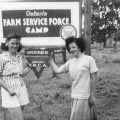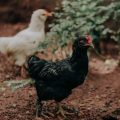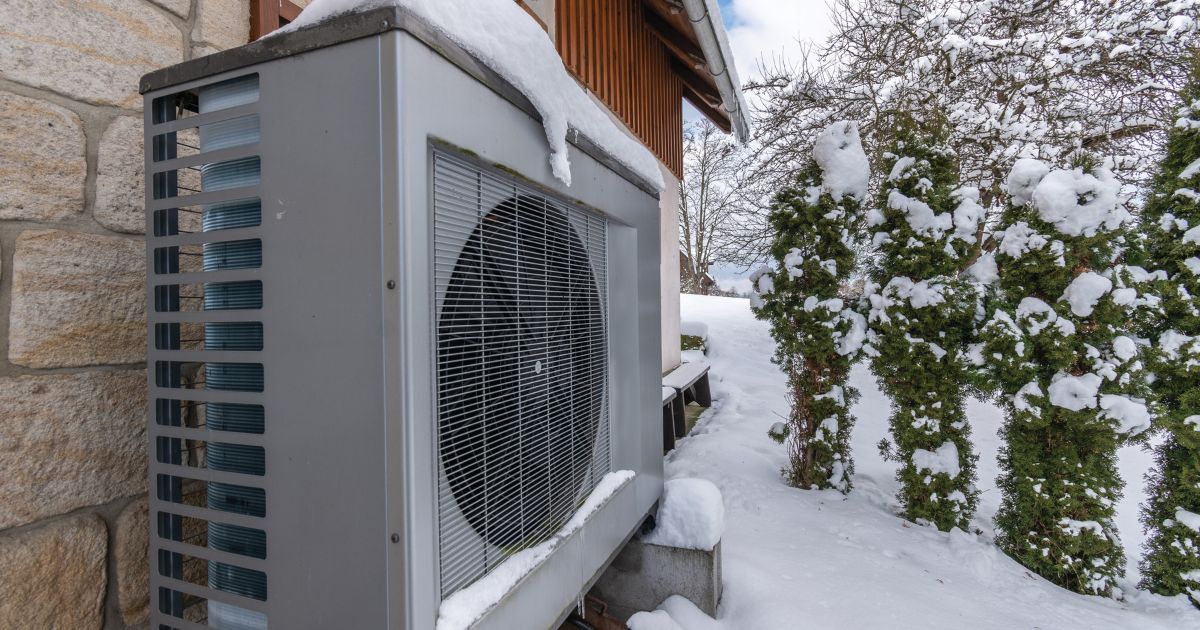We had five laying hens last spring and summer. Six, originally, but one of the family dogs ordered takeout from another farm’s henhouse. Our No. 6 became the reparation payment.
There were two hens commonly called Browns, two Plymouth Rocks, and a lonely Leghorn who found herself the odd gal out after “the incident.”

Each morning, one of the kids would pop across the farmyard in their PJs to gather the eggs. Five hens, five eggs, every day. One of the hens had a talent for dropping double-yoked eggs now and then — nature’s version of a Kinder Egg surprise. The accessibility of natural suspense and instant omelettes every morning was a minor miracle for a family that usually calls Toronto’s Beaches neighbourhood home.

As with so many stories for 2020, our adventure set out to be a normal March Break. We happily drive the 5-plus hours up Highway 11 to Gramma and Popsie’s farm in the Temiskaming Valley for regular breaks. One of our Toronto friends who visited the farm for our wedding described the locale as follows: “I thought the farm was in the middle of nowhere, but it’s actually 20 minutes outside the middle of nowhere.” Tough, but fair.

Like its owners, the farm has retired. It previously housed about 1,500 laying hens, emus and ostriches, fortunately not all at the same time. These days, the tin-clad barns are largely full of Popsie’s yard sale and online auction treasures. (It’s another story in itself, but Popsie can find value in most anything. He is the King Midas of miscellany, the alchemist of crap.) In lieu of egg cartons, the shop fridge is now filled with pop and beer. In the summer, the farmyard is a playground of swings, monkey bars, a trampoline and a basketball hoop. There are no fences for a child’s imagination. In March, the snow is still hip high across the yard. The main attraction is the pile of snow created when the neighbour plows the driveway. It would be exaggerating to call it mountainous, but it’s big enough for the kids to head home after March Break with a few bumps and bruises on their tailbones.

But then, March Break never ended. Rather than haul the kids’ tender bums back to our semi-detached home in a city shut down, eight of us hunkered down in the farmhouse and braced for its log walls to close in.

Early days were the shared global mayhem of misfired Zoom classes and cut-throat competitions among kids and working parents for rural-speed internet access. Our nephew’s PlayStation was the first victim of COVID once we discovered it single-handedly consumed every byte of data we had. Faced with next to no online access, bored kids thrashed and moaned as if the house had lost its oxygen. We were remote, disconnected and feeling aimless. The kids longed to return to a city that was no longer what they envisioned. Any parent recalls those first few weeks reluctantly. They were exhausting in their utter unproductiveness. It was all you could do to change into a fresh pair of sweatpants the next morning.

But then good things started to happen. First, the local cable guy rode to the rescue. We doubled our internet speed to a breakneck 14 megabytes per second (for context, log onto fast.com; if you’re near a city, your internet speed is likely 100-plus). Even so, our 14 megabytes were enough to prevent the daily anxiety attack of freezing up in the middle of meetings. We strung a line of coaxial cable across the yard and set up an office in the barn’s shop. Mornings became a bracing routine of tramping through the snow and cold to fire up the shop’s wood stove for the day. Some mornings came with a special kind of windless, soundless cold. Even the stove’s smoke froze, motionless above the roof, probably considering a retreat back into the chimney. It became a valuable routine, though, pleasant in its novelty. There was already a sense of accomplishment by the time the stove was crackling and the day’s first Zoom call began.

Home school started to hit its stride. Gramma had been enjoying life as a retired elementary school teacher until she got drafted back into service for a class of four: our first-grader niece, third-grader daughter, fifth-grader nephew and sixth-grader daughter.

The front of the classroom shifted from a computer screen to the outdoors. The kids were strapping on snowshoes and looking for animal tracks. Popsie set up a greenhouse for the kids to plant sunflowers, pumpkins and peas. Within days, the sprouts were popping out of their little pockets of soil. As the weather warmed and snow melted, basketballs, baseballs and kites started to appear during recesses and afternoons. The trampoline was set up and the yard came to life with laughing, singing, shouting, yelling … screaming … crying … (repeat several times per day). Evenings down in the valley started to look like truck rallies as floodlit farm equipment zigged and zagged across fields to plant the year’s crops. The pungent smells of waterlogged pasture and manure-seasoned fields fermented in our noses. Life seemed to have a new rhythm and energy.

Clear, moonless nights were spectacular events. As the sun disappears and the sky darkens, the stars appear one by one like popcorn. Gazing up at the Milky Way and constellations in full blaze was dizzying. The sky takes on a depth that turns the world upside down and pulls you in.

The hens themselves were another unexpected discovery. The kids gave them names like Jessie, Bubbles, Rock Star and Wilson. The Leghorn and Browns were mellow sorts. They stuck to their own and preferred to trot around any two-legged intruders to their henhouse. The Plymouths were a different story. Even our scrappy little poodle learned to give these black-and-white hens a wide berth. The girls often came back from the henhouse empty handed because one of the hens decided it no longer wanted to give up its eggs — or any of the other hens’ eggs, for that matter.

Glimpses of wildlife kept us constantly on the lookout. Sometimes it was a fox across the field, or a curious, tiny weasel popping its head out from behind the shelves of a shed. We used mobile apps to identify plants, trees and different types of finches and woodpeckers darting in and out of the yard. We shared our barn office with a chipmunk and a red squirrel that were as predictable in their trips across the shop as an office worker commuting to and fro. One day, sitting motionless on yet another long call, there was a light tap on my shoulder. Al turned his head expecting to see one of our daughters’ hands there, only to scare the red squirrel off its perch. Of all the times not to have the laptop camera on!

And then there was the Funny Farm. That’s what one of the cousins calls her new hobby farm-petting zoo. The mingling of rabbits, goats, ducks, emus, chickens, barn cats and a pig feels like a wrap party after the filming of Babe. You could almost hear the emu, Waylon, and her inseparable buddy Jennings, a little hen, arguing over which duck was the handsomest. We quickly became an adoption agency of barn kittens, ferrying litters down to Toronto for friends eager for a furry addition to keep their quarantined kids from killing each other. One cat, now down to eight lives, was left singed, blistered and orphaned following a devastating barn fire down the road. Ember, as she is now named, is melting hearts and loving life as a house cat in the city’s west end.

Back at our own farm, there was no end to the projects on the go. The henhouse was top of the list. The girls were keen to help paint the drab brown building a bright barn red. Our simple plan evolved into re-planking the front wall, replacing broken windows and re-trimming the eaves. By July, it was rechristened “The Best Little Henhouse in Temiskaming.”

As winter turned to spring, and spring to summer, the little projects added up: A new picnic table with hand-painted flowers and other patterns. The concrete floor from a torn-down shed became a sport court, complete with lines and basketball hoops at each end. The little green shoots from late March were now thickening stalks of sunflowers and pumpkin vines climbing out of their garden boxes. Woodworking projects became therapy after the hours of video calls that blurred work days and numbed the mind. With every passing day, we could see our growing imprint on the farm. Our own roots sank deeper into the soil with every sunset.

When we came up to the farm from Toronto in March, we would say we were “heading out to the country” or “leaving the city.” We were “getting away.” By September, we seemed to be looking at the world from the other end of the binoculars. We had experienced a world that was more immediate in all five senses. Much like the planter boxes spilling over from our kids’ sunflower and pumpkin seeds months earlier, the entire valley had filled from May’s mud to ripened wheat, barley, beans, carrots, canola and potatoes — all of which would end up on tables around the province, or maybe even abroad. Everything we experienced reinforced the feeling that we were closer to something than we were in the city. It wasn’t the middle of nowhere after all. It was the heart of it.
Alan Findlay
Born and raise in Alberta, Alan is currently a communications professional based (most of the time) in Toronto. His home-away-from-home office on his in-laws’ Temiskaming Valley farm in Northeastern Ontario has allowed for several new project past-times, including furniture making (he calls it "ramshackle chic"), chicken-coop makeovers and igloo construction.
Alicia Farrow
Alicia studied photography at George Brown College and has been passionate about the medium since a young child. Her photographs aim to capture the everyday life of a busy, young family through a lens of appreciation and wonder. Growing up in Northern Ontario, Alicia’s eye is particularly drawn to natural settings and the beauty of their wild side.













